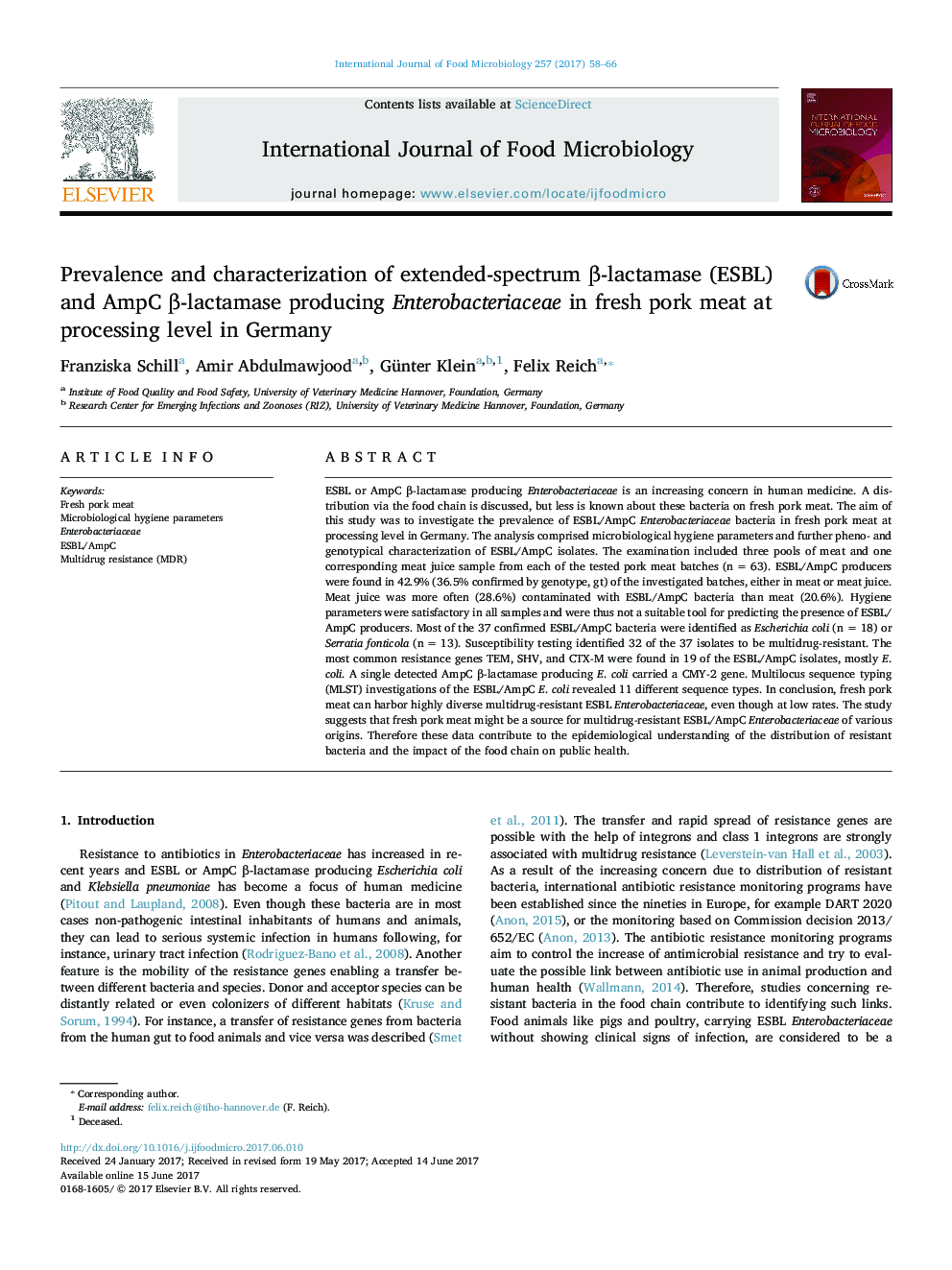| کد مقاله | کد نشریه | سال انتشار | مقاله انگلیسی | نسخه تمام متن |
|---|---|---|---|---|
| 5740656 | 1616526 | 2017 | 9 صفحه PDF | دانلود رایگان |

- ESBL or AmpC producers were detected in 42.9% (36.5% gt) of the 63 meat batches.
- Combining the sample types “meat” and “meat juice” results in higher sensitivity.
- Most ESBL Enterobacteriaceae were classified as multidrug-resistant.
- Isolates of E. coli were highly diverse according to MLST.
ESBL or AmpC β-lactamase producing Enterobacteriaceae is an increasing concern in human medicine. A distribution via the food chain is discussed, but less is known about these bacteria on fresh pork meat. The aim of this study was to investigate the prevalence of ESBL/AmpC Enterobacteriaceae bacteria in fresh pork meat at processing level in Germany. The analysis comprised microbiological hygiene parameters and further pheno- and genotypical characterization of ESBL/AmpC isolates. The examination included three pools of meat and one corresponding meat juice sample from each of the tested pork meat batches (n = 63). ESBL/AmpC producers were found in 42.9% (36.5% confirmed by genotype, gt) of the investigated batches, either in meat or meat juice. Meat juice was more often (28.6%) contaminated with ESBL/AmpC bacteria than meat (20.6%). Hygiene parameters were satisfactory in all samples and were thus not a suitable tool for predicting the presence of ESBL/AmpC producers. Most of the 37 confirmed ESBL/AmpC bacteria were identified as Escherichia coli (n = 18) or Serratia fonticola (n = 13). Susceptibility testing identified 32 of the 37 isolates to be multidrug-resistant. The most common resistance genes TEM, SHV, and CTX-M were found in 19 of the ESBL/AmpC isolates, mostly E. coli. A single detected AmpC β-lactamase producing E. coli carried a CMY-2 gene. Multilocus sequence typing (MLST) investigations of the ESBL/AmpC E. coli revealed 11 different sequence types. In conclusion, fresh pork meat can harbor highly diverse multidrug-resistant ESBL Enterobacteriaceae, even though at low rates. The study suggests that fresh pork meat might be a source for multidrug-resistant ESBL/AmpC Enterobacteriaceae of various origins. Therefore these data contribute to the epidemiological understanding of the distribution of resistant bacteria and the impact of the food chain on public health.
Journal: International Journal of Food Microbiology - Volume 257, 18 September 2017, Pages 58-66